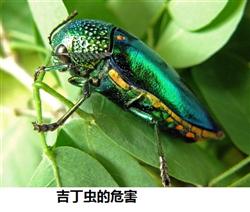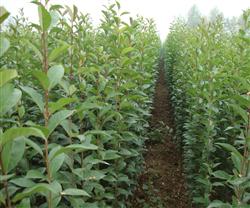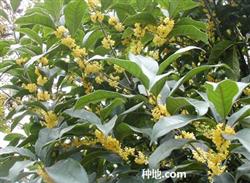What insect pests should be prevented when planting sweet-scented osmanthus trees?

What insect pests should be prevented when planting sweet-scented osmanthus trees? Please introduce the insect pests of sweet-scented osmanthus trees, such as Jiding insect, shell insect, diamondback moth, coir moth and so on. The field net has sorted out the control methods of sweet-scented osmanthus tree pests, which are listed below for your reference. 1. The harm and control methods of Kidingworm: the larvae eat in the cortex of the branches and shed oil dotted brown colloid. When the damage is serious, the bark bursts, the main branch or the whole plant dies, the adults bite on the tender leaves, and a large number of leaves fall in serious cases. Where the management is poor, the weak trees suffer more seriously. Control of gibberellin: during the peak hatching period of larvae (usually May), the bark was scraped and 20 times of 80% dichlorvos emulsion was applied; during the occurrence period of adults (about June), 1000 times of 90% trichlorfon was sprayed on the tree crown for 2 to 3 times. Second, the harm and control methods of scale insects: the scale insects that harm sweet-scented osmanthus include red wax, blowing cotton, bran and so on. Nymphs and adults pierce the branches and tissues with oral needles to absorb sap, causing the branches and leaves to wither and die. At the same time, secrete honeydew, induce soot disease, serious harm. Control of shell insects: spraying 2500 times EC of 20% chrysanthemum or 2.5% deltamethrin EC during nymph incubation period; spraying 1500 times EC of 40% speed during shell formation, which has good control effect because of strong permeability. Third, the harm of diamondback moth and its control methods: the main diamondback moths that harm sweet-scented osmanthus are yellow diamondback moth, green diamondback moth, green diamondback moth, flat moth and so on. Most of the larvae overwintered in the cocoon, and the young larvae ate leaves in clusters, which was the heaviest from July to September, and the adults had strong phototaxis. Prevention and control of diamondback moth: from May to June, black light is used to trap and kill adults; cocoons attached to branches and trunks are removed manually; chemical control should be carried out in time in the stage of young larvae. 2000 times of cypermethrin or 1000 times of trichlorfon can be selected to spray and kill larvae. Fourth, the harm of coir moth and its control methods: the main species that harm sweet-scented osmanthus are big coir moth, tea coir moth and so on. The larvae can spit silk into cocoons, which are covered with all kinds of broken branches and leaves, showing various forms of bags. Most of the larvae are concentrated on the top of the crown to feed on the leaves, and in severe cases, the leaves can be eaten, resulting in serious damage to plant growth and even death. Control of coir moth: cut off insect branches and remove cysts in winter; chemical control should be carried out in time in the stage of young larvae. 1000 times liquid of 95% crystal trichlorfon or 1000 times solution of 50% fenitrothion can be used to spray and kill larvae. Click to get more sweet-scented osmanthus tree planting techniques
- Prev

How to graft sweet-scented osmanthus trees?
How to graft sweet-scented osmanthus trees? What are the methods of grafting Osmanthus fragrans? Ask netizens to help introduce that sweet-scented osmanthus grafting has the advantages of easy survival, fast forming and early flowering. The planting network has sorted out several grafting methods of sweet-scented osmanthus trees, which are listed below for netizens' reference. First of all, the cultivation of grafted rootstocks: grafting sweet-scented osmanthus.
- Next

What method can make sweet-scented osmanthus trees blossom early?
What method can make sweet-scented osmanthus trees blossom early? Please introduce that in order to make sweet-scented osmanthus blossom earlier, you can refer to the following methods: 1. Choose early-maturing sweet-scented osmanthus varieties: different sweet-scented osmanthus varieties bloom at different times, and the length of vegetative growth period is also different.
Related
- Fuxing push coffee new agricultural production and marketing class: lack of small-scale processing plants
- Jujube rice field leisure farm deep ploughing Yilan for five years to create a space for organic food and play
- Nongyu Farm-A trial of organic papaya for brave women with advanced technology
- Four points for attention in the prevention and control of diseases and insect pests of edible fungi
- How to add nutrient solution to Edible Fungi
- Is there any good way to control edible fungus mites?
- Open Inoculation Technology of Edible Fungi
- Is there any clever way to use fertilizer for edible fungus in winter?
- What agents are used to kill the pathogens of edible fungi in the mushroom shed?
- Rapid drying of Edible Fungi

